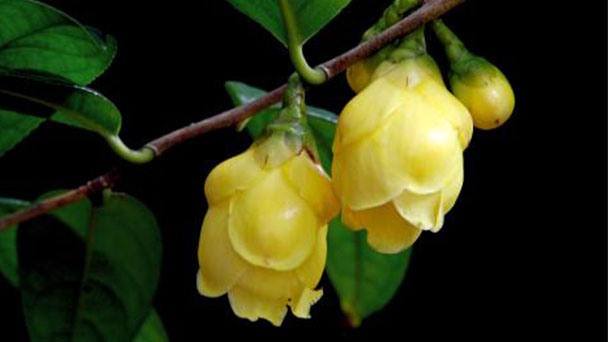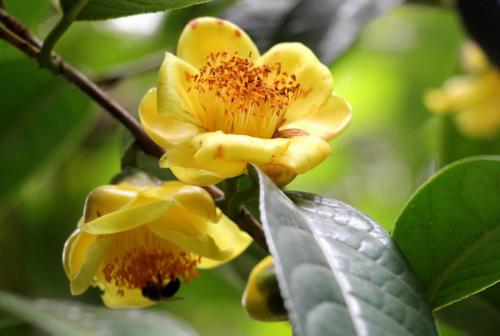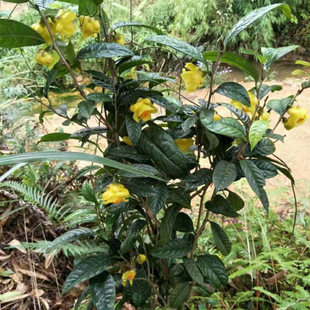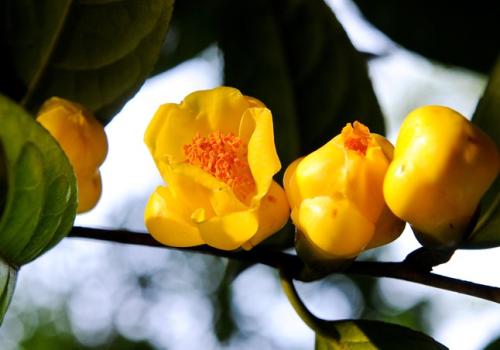How to Grow and Care for Camellia Chrysantha
Written by Maggie
Nov 01 2021

Camellia chrysantha is known as the Empress of the tea race and has the reputation of giant panda in the plant world. As one of the most nutritious and medicinal plants in nature, camellia sinensis is rich in more than 400 nutritious substances that are beneficial to human health. With high value, many people want to grow Camellia chrysantha. How to grow and care for Camellia chrysantha? Let's look together.

Growing Camellia Chrysantha
Place to grow: Camellia chrysantha should be placed in a warm and humid, ventilated and transparent place. In spring, it needs enough illumination. In summertime appropriate notices shade, avoid sunshine point-blank with west bask in. If placed in a balcony, it will die if not maintained carefully
Soil: The requirements for soil are fertile, deep, moist and breathable, with a pH range from 4.5 to 6.5.
Humidity:
1. Air humidity: In order to maintain air humidity, tall trees should be used as shelter in the upper echelons of Camellia chrysantha, or a shading network should be added to create a half-shade and half-yang environment.
2.Soil moisture, soil humidity of camellia chrysantha growth has very big concern, soil humidity, graphic is too low, easy to grow, to ensure its root system developed, normal growth. It is necessary to maintain good Mark Twain, straw or weeds and Camellia chrysantha production waste buffalos ground cover moisturizing effect is good.
Light: Camellia Chrysantha is a half-shade and half-yang tree species. Tree planting and shading can be used. The designed shade height is between 2.2m and 2.5m, which gives a maximum transmuity of around 30%.
Wind: Camellia chrysantha is afraid of high winds, especially north winds and typhoons, so precautions should be taken.
Temperature: To achieve a high yield of Camellia chrysantha, it is essential to maintain an optimum temperature of 20-30 degrees, with a minimum temperature of -5 degrees below zero.
Watering: The cultivation of camellia bonsai to keep the soil moist state, but should not be too wet, to prevent when dry wet. Generally in the spring we can appropriately apply more irrigation, in order to sprout extraction; In summer adhere to early, late watering, the best spray leaf water, so that the leaves are soaked. Do not use rapid water directly, full irrigation, abd should not water hot water, avoid high temperature around noon watering; Water the right amount in autumn; It should be watered around noon in winter.
Fertilization: Camellia chrysantha likes fertilizer, and it can be in the basin soil to put basic fertilizer, mainly phosphorus and potassium fertilizer. Usually it should not be too much fertilizer, generally in the flower between April and May 2 to 3 times thin fertilizer. In November, apply a slightly thick water fertilizer. With fertilizer you should pay attention to the proportion of phosphorus fertilizer slightly larger, in order to promote colorful flowers.
Camellia Chrysantha likes fat, but afraid of raw and thick, let alone can not be applied more than once. It is best to "frequent thin", will be flowers and leaves. During the growth of leaves and leaves of Camellia chrysantha, nitrogen-based fermented cakes should be applied 3 ~ 4 times to promote the germination and extraction of new shoots. During May and June, the stage of pregnancy in Camellia chrysantha should be followed by 3-4 times of organic high potassium fertilizer, such as calcium superphosphate, bone powder, potassium dihydrogen acid, fully decomposed farm manure, fishy water and other liquid fertilizers, to promote the formation of buds and enhance drought resistance. From September to November, the mixed liquid fertilizer was applied 2 to 3 times to promote the hypertrophy of flower buds and enhance the cold resistance. But in the hot summer (July ~ August) and the cold season (December ~ February) generally do not need to fertilize.
Organic high potassium fertilizer: effective content ≥59% organic matter ≥45% NPK ≥14% amino acid ≥8% crude protein ≥19%
Pruning: Camellia growth is relatively slow, and we should not be excessive pruning, generally it will affect the shape of the long branches and insect branches, weak branches can be cut away. If the bud on each branch is too much, we can sparse flower leaves only 1-2, and maintain a certain distance, the rest is picked as soon as possible, so as not to consume nutrients. In addition, also timely pick close to the withered flowers, and we can also reduce nutrient consumption, so that the plant robust growth, the formation of new flower buds. Turning camellia bonsai can be once every 1-2 years, the new pot should be bigger than the old one, to facilitate the development of the root system. Turn basin time appropriate in spring April. The union changes the soil to remove the old soil of partial harden suitably, replace fertile loose new soil, combine place base fertilizer.
Pest control: The main diseases and pests of camellia include blackberry disease, anthrax, etc., which can be controlled by spraying 0.5 degree Bordeaux liquid. Insect pests mainly have tea shoot moth, and the control methods can be cut off insect shoot, generally in April to June for the appropriate.

Camellia chrysantha Care
When caring for Camellia chrysantha, choose cultivated soil, see more mild sunshine.
Camellia Chrysantha loves loose, breathable, slightly acidic soil. Leaf mould can be mixed with garden soil, river sand and so on to meet the needs of root respiration. Due to its preference for slightly acidic soil, ferrous sulfate can also be used for culture.
Like the common tea plant, Camellia chrysantha loves a semi-shade and, in mild light, is ideal for growth, with dark green leaves, bright flowers and a certain glamour.
Watering & Fertilizing
Camellia Chrysantha prefers a moist but wet environment. Water can be found in normal times, but not too much, especially not too much water. Otherwise, roots can be soaked and growth can be affected.
Fertilize potted plants. Use ripe organic fertilizers in the spring, and mix with high-nitrogen compound fertilizers to promote the growth of Camellia chrysantha. In June and July, it will undergo flower bud differentiation. At this time, it can be simply sprayed with potassium dihydrogen phosphate to facilitate flower bud differentiation. Combine organic fertilizers with some compounds to promote the flowering of Camellia Chrysantha, and enhance your ability to protect against the cold in the fall.
Pruning
To appreciate Camellia chrysantha, it is mainly flowering, with light pruning. You can choose the main stem before bud differentiation in early summer. It is best to remove the excessive and dense side branches, which are good for the growth of the main branch; Moreover, the top part should be sparse, which can allow light and ventilation to promote growth. After pruning, some quick phosphate fertilizer can be simply used to promote flower bud differentiation.
After the present bud, it can be too much sparry, malformed bud, conducive to nutrient concentration, improving the quality of flowering.
Ventilation & Temperature
Like other plants, Camellia Chrysantha likes to live in a ventilated and breathable environment, so it is best to preserve outdoors, in shades, and indoors, with windows and ventilation, which are conducive to growth.
In addition, it is the original mountain, like a wet and cool environment, so usually to spray water to maintain air humidity. In the summer, pay attention to cooling, and in the winter, pay attention to keep warm.

Latest Updated
- Benefits of Bugleweed - 7 Science-backed Health Benefits
- Bugleweed Dangers & Side Effects - Is It Poisonous?
- How to Plant Evergreen Trees - What You Should Know
- When to Plant Evergreens - Grow Guide for Evergreen Trees
- 12 Wonderful Evergreen Shrubs for Your Garden
- 12 Popular Evergreen Plants with Pictures for Beginners
- When And How To Prune A Lilac Bush Like a Pro
- How to Grow & Care for Lilac Vine (Hardenbergia Violacea)
- Japanese Lilac Tree (Syringa Reticulata) Care & Propagation Guide
- Shumard Oak Pros and Cons - What to Know
Popular Articles
- Winter maintenance of Antirrhinum Majus
- How to Grow Terminalia Mantaly Tree
- How to Grow and Care for Crossostephium Chinense
- How to grow Antirrhinum Majus in spring
- Peristeria Elata (Dove Orchid) Profile: Info & Care Guide
- Underwatered Snake Plant (Sansevieria Trifasciata) - Signs And How To Fix
- How to Care for Brazilian Jasmine Plant (Mandevilla Sanderi)
- How to Grow & Care for Graptopetalum Purple Delight in Summer
- Rosa Chinensis (China Rose): Plant Growing & Care Tips
- How to Care for Baby Sun Rose (Aptenia Cordifolia)